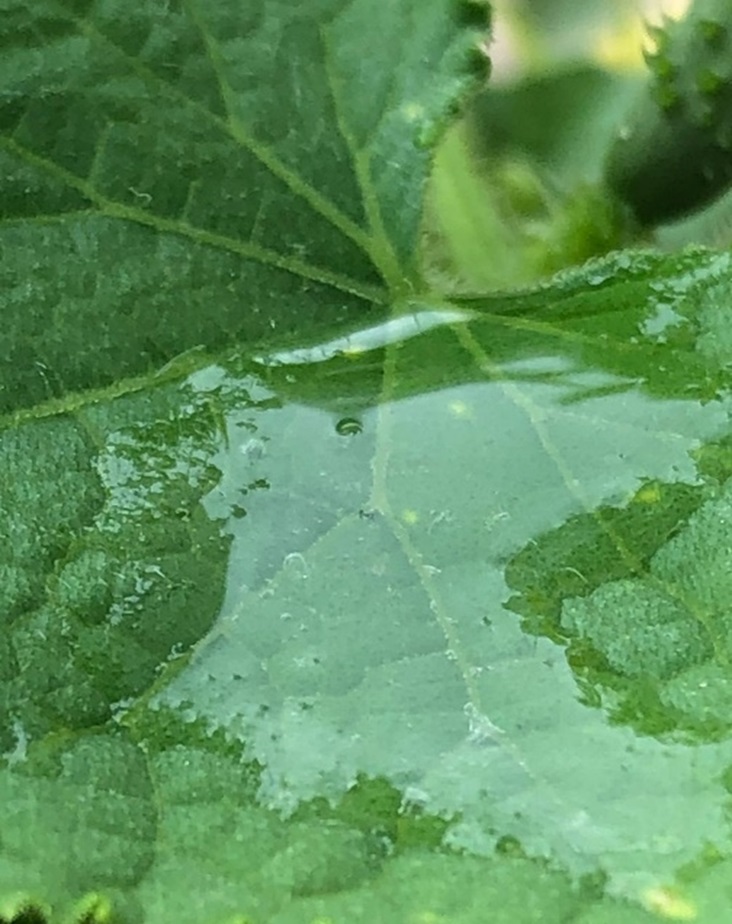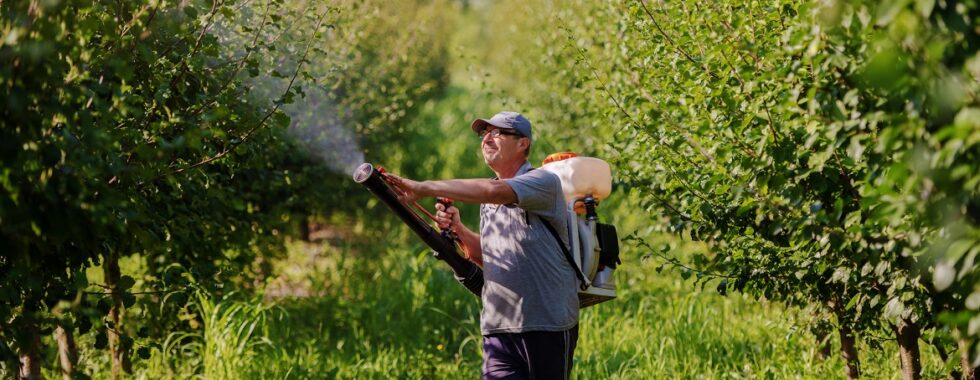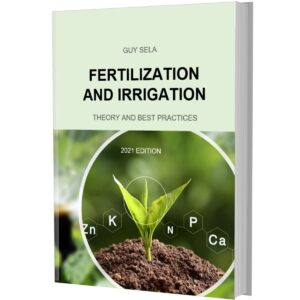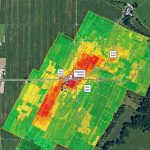Foliar feeding
Foliar fertilization, also referred to as foliar feeding, is the application of plant nutrients directly to the foliage of the plant by spraying the crop with a liquid fertilizer solution. While it can be used on a large variety of crops, it is more commonly applied in horticultural crops.
Generally, plants can obtain all their essential nutrients from soil. The nutrient quantities required by plants are large and cannot be supplied through the foliage. However, under some conditions and circumstances, the crop may benefit from foliar fertilization of small quantities of nutrients, especially of micronutrients. The purpose of foliar fertilization is, therefore, to supplement soil applications, not to replace them.
Nutrients applied by foliar fertilization are absorbed quicker than nutrients applied through soil. They penetrate the plant through hydrophilic pores in the cuticle and, to some extent, also through the stomata.
Why foliar feed?
Foliar feeding can be effective in the following circumstances:
Correcting nutrient deficiencies – Nutrients applied by foliar sprays are absorbed faster and more efficiently than soil applications. Therefore, foliar nutrient sprays can provide a quick correction of nutrient deficiencies. However, the correction is temporary, and a long-term correction should consist of both soil and foliar applications. The most common nutrients deficiencies that can be corrected with foliar sprays are of potassium, zinc, boron, manganese and iron.
Inadequate soil conditions – Unfavorable soil conditions restrict nutrient uptake from soil and, therefore, applying nutrients directly to the foliage can be beneficial.
High soil pH may restrict the uptake of micronutrients and induce deficiencies. Soil application of chelates may help, but foliar applications can provide a quicker, more efficient solution.
Nutrient imbalances in soil may cause competition for uptake and restrict the uptake of some nutrients. For example, excess calcium can interfere with potassium uptake. Foliar application can bypass the competition and unwanted interactions in the soil.
Water logging conditions and excess moisture in soil may cause nutrient deficiencies. Under such conditions of oxygen stress, roots cannot function efficiently.
Unfavorable environmental conditions – Foliar nutrient applications can improve crop growth when environmental conditions are unfavorable. Conditions such as cloudy weather, temperatures that are too high or too low and high humidity impede nutrient uptake from soil.
Damaged or diseased root system – Any conditions that reduce or damage root activity also reduce nutrient uptake from soil. Damaged roots, or roots affected by diseases are less effective in nutrient uptake. Foliar feeding can alleviate the negative effect.
Supplemental application to boost growth – Nutrient requirements vary throughout the growth cycle of the crop. Supplemental foliar applications of nutrients, at the time when they are needed, can positively influence growth and yield.
Best practices of foliar feeding
Spraying when weather conditions are adequate – Temperature, humidity and wind speed affect the efficiency of the foliar application. Foliar feeding is most efficient at temperatures below 25˚C, high humidity and when weather is calm. Such conditions often occur in the late evening hours or early morning.
Under these conditions, plant leaves can better absorb the applied nutrient. When applied at high temperatures or low humidity, the spray droplets dry quickly and, in addition, pores on leaf surfaces close. As a result, the absorption rate reduces.
Adjusting the pH of the spray solution – Acidic pH of the foliar nutrient solution improves the absorption of nutrients by leaves. A solution pH of around 5.0 is suitable for most foliar applications, however the optimal pH will vary from nutrient to nutrient. For example, the adequate pH range for phosphorus application is 3.0-3.7, ideal pH for zinc is between 4.1 and 4.9 etc.
The pH of the spray solution affects the efficiency of the application by affecting the solubility of the applied fertilizers and the penetration of nutrients through the cuticle:
- Solubility – Nutrients must be present in their soluble form in the spray solution in order to be absorbed by plants. The solubility of many nutrients is higher in slightly acidic pH, and, therefore, at this pH range they remain in the solution and do not precipitate.
- Cuticle charge – Plant cuticles contain fixed ionic charges that are pH dependent and a negative net charge at pH >3. Therefore, the pH of the spray solution can affect cuticle charge and nutrient penetration through it.
Controlling spray droplet size and pressure– Large drops cover a smaller leaf area than small drops and tend to fall to the ground. Therefore, smaller drops are preferred. However, droplets that are too small may result in nutrient losses as a result of drift.
The droplet size is determined by the type of spray nozzle used and the spray pressure. Selecting a proper sprayer nozzle and applying the right pressure are, therefore, important factor in foliar application. However, no specific recommendations are available for foliar feeding.
Using surfactants – Due to surface tension, spray droplets tend to have a minimum contact with the leaf and may also fall off. Surfactants are materials that reduce the surface tension and increase the contact surface area of the droplets with the leaves. As a result, adding a surfactant to the spray solution increases the efficiency of the foliar feeding.


Drops on a leaf. Without surfactant (left) and with surfactant (right). Photos by Guy Sela.
Constraints of foliar feeding
Although foliar feeding is considered an effective way of applying nutrients to plants in a variety of situations, it has some limitations.
Potential leaf damage – As the spray solution dries on leaf surfaces, the concentration of salts (the applied fertilizers) increases and may damage leaves. Leaves may become chlorotic and necrotic if the concentration of the spray solution is too high or if the spray was applied when conditions are unfavorable or when the plant is stressed.
Short timeframe for absorption – Once the spray droplets dry on leaf surfaces, nutrients become unavailable and absorption rate decreases dramatically.
Low application rates – Due to phytotoxicity, potential leaf damage and limited absorption rate through the leaves, foliar application rates must be relatively low and do not meet the nutrient requirements of the crop, especially the macronutrient requirements. Therefore, foliar nutrition is mostly supplementary.
Cost/benefit considerations – The cost of foliar feeding is often higher than the cost of soil applications. Furthermore, because of the low application rates, several applications may be required, which make the costs even higher.








